Related Research Articles
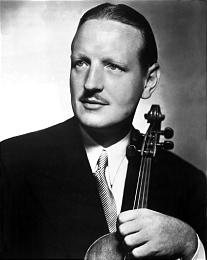
William Primrose CBE was a Scottish violist and teacher. He performed with the London String Quartet from 1930 to 1935. He then joined the NBC Symphony Orchestra where he formed the Primrose Quartet. He performed in various countries around the world as a soloist throughout his career. Primrose also taught at several universities and institutions. He is the author of several books on viola technique.
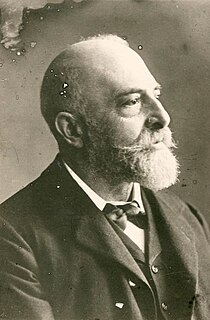
Leopold von Auer was a Hungarian violinist, academic, conductor, composer, and instructor. Many of his students went on to become prominent concert performers and teachers.

The Suzuki method is a music curriculum and teaching philosophy dating from the mid-20th century, created by Japanese violinist and pedagogue Shinichi Suzuki (1898–1998). The method aims to create an environment for learning music which parallels the linguistic environment of acquiring a native language. Suzuki believed that this environment would also help to foster good moral character.
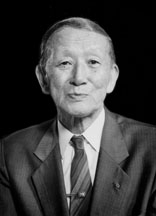
Shinichi Suzuki was a Japanese musician, philosopher, and educator and the founder of the international Suzuki method of music education and developed a philosophy for educating people of all ages and abilities. An influential pedagogue in music education of children, he often spoke of the ability of all children to learn things well, especially in the right environment, and of developing the heart and building the character of music students through their music education. Before his time, it was rare for children to be formally taught classical instruments from an early age and even more rare for children to be accepted by a music teacher without an audition or entrance examination. Not only did he endeavor to teach children the violin from early childhood and then infancy, his school in Matsumoto did not screen applicants for their ability upon entrance. Suzuki was also responsible for the early training of some of the earliest Japanese violinists to be successfully appointed to prominent western classical music organizations. During his lifetime, he received several honorary doctorates in music including from the New England Conservatory of Music (1956), and the Oberlin College Conservatory of Music, was proclaimed a Living National Treasure of Japan, and was nominated for the Nobel Peace prize.

The College of Emporia was a private college in Emporia, Kansas from 1882 to 1974, and was associated with the Presbyterian church.

Ivan Alexander Galamian was an Armenian-American violin teacher of the twentieth century who was the violin teacher of many seminal violin players including Itzhak Perlman.
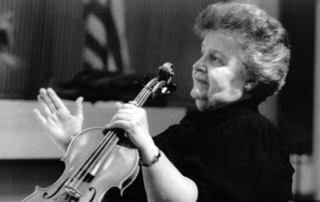
Dorothy DeLay was an American violin instructor, primarily at the Juilliard School, Sarah Lawrence College, and the University of Cincinnati.
Chicago Musical College is a division of the Chicago College of Performing Arts at Roosevelt University.

Roman Totenberg was a Polish-American violinist and educator. A child prodigy, he lived in Poland, Moscow, Berlin, and Paris, before formally immigrating to the U.S. in 1938, at age 27. He performed and taught nationally and internationally throughout his life.
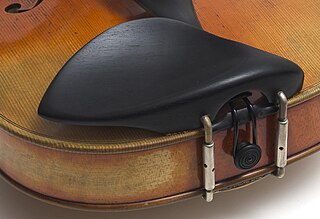
A chinrest is a shaped piece of wood attached to the body of a violin or a viola to aid in the positioning of the player's jaw or chin on the instrument. The chinrest may be made of ebony, rosewood, boxwood, or plastic.

The shoulder rest is an accessory that can be found on violins and violas. The shoulder rest appeared around the middle part of the 20th century. It may be made of wood, aluminium, carbon fiber or plastic. Usually, the shoulder rest attaches to the edge of the back of the violin with "feet" padded with rubber tubing or made of soft plastic. The goal of a shoulder rest is to allow a more comfortable attitude while playing by adding height to the shoulder and preventing the instrument from slipping. A shoulder rest generally follows the curve of the shoulder; some shoulder rests are bendable, others are made of sponge-like material, and a few have an extension that hooks further over the shoulder for stability.
Eric Rosenblith was an Austrian-born American violinist. He was the former concertmaster of the Indianapolis and San Antonio Symphony Orchestras, and had performed as a soloist and chamber musician throughout North America, Europe, and Asia. Rosenblith served as chairman of the New England Conservatory's string department for more than twenty-five years and was a faculty member of the Hartt School as well as the Longy School of Music in Cambridge, Massachusetts. He was a visiting professor at the University of Kansas.
John Dalley is an American violinist. He was raised in a musical family. His father was an orchestra conductor, violinist, composer, instrumental teacher, and music educator. His mother, from Bloomington, Illinois, was a cellist, music teacher, and music publisher.
Paul Zukofsky was an American violinist and conductor known for his work in the field of contemporary classical music.
Kató Havas was a Hungarian classical violinist and a teacher of both the violin and viola who developed the "New Approach to violin playing" to help prevent physical injuries and eliminate stage fright related to playing the violin or viola. Through the teaching of the New Approach, Kató Havas realized that the release of physical tensions eliminated also mental tension. In her book Stage Fright Kató Havas analyzes the physical, mental and social causes of it and gives practical answers and exercises.
Julie Lyonn Lieberman is an American improvising violinist, vocalist, composer, author, educator, and recording artist specializing in fiddle and international violin styles. She is among the first to teach improvisation and world music at the Juilliard School. She also created the first eclectic styles teacher training program in the world as artistic director for the summer program, Strings Without Boundaries. Ms. Lieberman is an author, composer, producer, and performing artist.
Bessie Marshall Whitely or Whiteley (December 25, 1871 - November 7, 1944 was an American composer, pianist, and teacher. She attended the Oakland Conservatory of Music in Oakland, California, and studied with H. G. Pasmore, J. P. Morgan, and Louis Lesser. Whitely was a piano teacher and music supervisor in Kansas City, Missouri, for 32 years.
Louise Behrend was an American violinist and academic. She was dedicated to the Suzuki method of teaching, and founded the Suzuki-based School for Strings.
Mildred Weston Rogers was an American author and composer who is best known for her piano compositions published by the Arthur P. Schmidt Company under her birth name "Weston." She was born in Gallitzin, Pennsylvania, to William and Anna Weston. Weston graduated from the Pennsylvania College for Women in Pittsburgh and the New England Conservatory of Music. After college, she taught music at Simonson's School and married William G. Rogers on December 6, 1933.
Josephine Augusta Trott was an American author, composer, and music educator who sometimes wrote under the pseudonym Colin Shepherd. Her violin pedagogy books are still in use today.
References
- 1 2 3 Niles, Laurie (29 December 2020). "Remembering Suzuki Pioneer William Starr (1923-2020)". Violinist.com.
- ↑ "William Starr | Authors". Suzuki Association of the Americas.